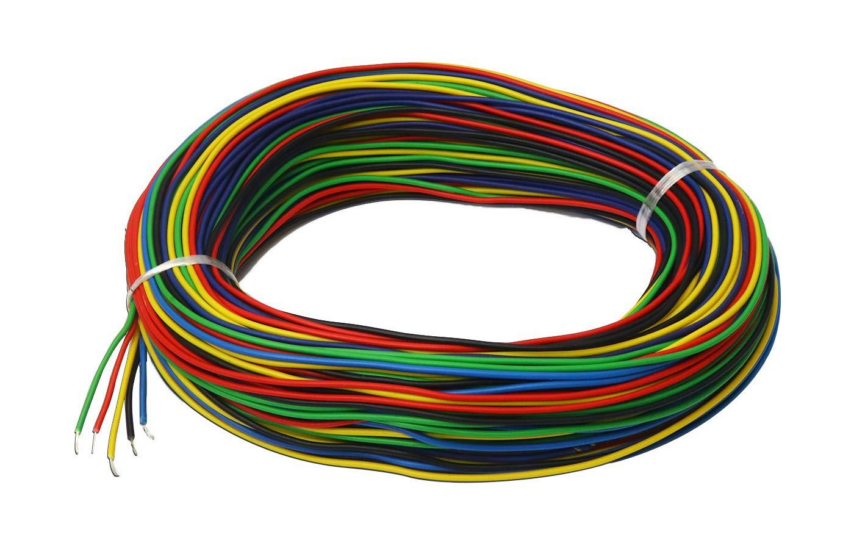We’d like to welcome you to our interactive tutorial on choosing the right 50 Amp wire size for 50 Amp breaker. Are you starting a project that will need a reliable power source, such as an electrical one? You could be installing a powerful device or establish a special circuit for a heavy electrical load. Whatever your motivation, knowing the proper wire size is essential to ensuring safety, effectiveness, and adherence to electrical rules. We’ll go through the important things to think about, provide advice on choosing the right wire gauge, and arm you with the information you need to make wise choices in this tutorial. In this thorough 2023 guide, let’s explore and debunk the myths around 50 Amp wire size.
What is a 50 Amp breaker? Why do we need it?
A circuit breaker with a 50 Ampere maximum current handling capacity is referred to as a 50 Amp breaker. It is often used to safeguard heavy-duty devices like electric ovens, hot tubs, giant air conditioners, and other equipment that uses a lot of electrical current to function. The breaker’s job is to keep the circuit from overloading and possibly posing risks like overheating, electrical fires, or equipment failure. The 50 Amp breaker contributes to the safety and correct operation of the electrical system by cutting off the flow of current when it exceeds the rated capacity of the circuit.
Some Amp Wire Measurements
Typical amp wire measurements include:
1. 14 AWG: This wire is often used for circuits having a 15 Ampere maximum capacity, such as lighting fixtures and standard residential outlets.
2. 12 AWG: This wire is often found in circuits with medium-sized electrical loads, such as kitchen appliances, power tools, and other items, and has a maximum current capability of 20 Amperes.
3. 10 AWG: This wire gauge is appropriate for circuits that can handle a maximum of 30 Amperes, which are often used for bigger equipment like electric dryers or electric water heaters.
4. 8 AWG: It is used for circuits that can handle a maximum of 40 Amperes and is often utilized in heavy-duty applications like air conditioners and electric furnaces.
5. 6 AWG: This wire size is ideal for circuits that can handle a maximum of 55 Amperes and is often used for substantial electrical installations, such as subpanels or huge machines.
Wire Size Ampacity Table

Image credit – electrical technology
Above we’ve let you know about 50 Amp wire size for 50 Amp breakers & other common sizes. An easy-to-read wire-size ampacity table, based on typical residential or commercial installations, is provided here. It gives approximative ampacity values for common wire sizes. Please keep in mind that local electrical regulations and particular applications could call for different ampacity ratings, therefore it’s better to get precise information by consulting the relevant code or a licensed electrician.
| Wire Size (AWG) | Typical Ampacity |
| 14 AWG | 15 Amps |
| 12 AWG | 20 Amps |
| 10 AWG | 30 Amps |
| 8 AWG | 40 Amps |
| 6 AWG | 55 Amps |
| 4 AWG | 70 Amps |
| 3 AWG | 85 Amps |
| 2 AWG | 95 Amps |
| 1 AWG | 110 Amps |
| 1/0 AWG | 125 Amps |
| 2/0 AWG | 145 Amps |
| 3/0 AWG | 165 Amps |
| 4/0 AWG | 195 Amps |
Once again, a reminder that these ampacity numbers are approximations and may change based on the details and regional electrical regulations. For precise and current information specific to your circumstance, always reference the relevant electrical code or a licensed electrician.
How To Read Cables?

Image credit – The home depot
Understanding the information on the labeling or markings on the cable is necessary to read them. When reading cables, keep the following points in mind:
1. Cable Type: The term “cable type” describes a cable’s particular category or use, such as “power cables,” “Ethernet cables,” “coaxial cables,” etc. It makes it easier to determine the cable’s intended use or application.
2. Cable Rating: A rating, such as a voltage rating or a current rating, is often attached to cables. While the current rating describes the most current the cable can carry without overheating, the voltage rating shows the highest voltage the cable can safely manage.
3. Cable Size: The gauge or cross-sectional area of the cable is often used to identify it, and this measurement is frequently represented by a “AWG” (American Wire Gauge) number.
4. Conductors: Cables may have a number of conductors, which are the separate wires that make up the cable. The conductors may be recognised by their labeling or color-coding.
5. Markings and Labels: Additional markings or labels on cables may provide information regarding their specifications, certifications, standard compliance, manufacturer data, and sometimes length indications.
6. Shielding: Some cables, such coaxial or shielded cables, may include extra shielding layers to fend against interference. On the cable, a shielding type and efficacy indicator may be found.
What If We Use the Size of Wires?
There may be a number of negative effects if improper wire size is used for an electrical installation.
1. Overheating: When a wire with a narrower gauge (greater AWG number) is utilized to carry a higher current than it is capable of, it may result in an excessive accumulation of heat. This may result in fire risks, damage to insulation, and probable device failure.
2. Voltage loss: Inadequate wire size, particularly for longer wire lengths, may cause voltage loss. As electricity flows through the wire, there is a loss in voltage known as a voltage drop.
3. Numerous Circuit Breaker Trips: If the wire size is too tiny to withstand the electrical load, this may result in numerous circuit breaker trips. This power outage may be annoying and might be a sign of an overloaded or poorly connected circuit.
4. Violation of Electrical rules: Electrical installations must follow local electrical standards and rules. The improper wire size may result in noncompliance, which can bring about failed inspections, fines, or safety risks.
Frequently asked questions
1. How can I determine a wire’s ampacity, for example?
A: You may use a clamp meter, sometimes referred to as an amp meter or current meter, to determine the ampacity of a wire. Simply secure the meter around the wire with a clamp to ensure a reliable connection, then check the amperage amount that is shown.
2. Can I tell a wire’s ampacity only by its color?
A: Wire color is not a good predictor of ampacity on its own. While in certain circumstances particular wire colors may be linked to particular ampacity ratings, it is important to check the labeling or markings on the wire and refer to the relevant standards or guidelines to establish its actual ampacity.
3. What are some warning signals that I could have selected the incorrect wire size for my electrical circuit?
A: There are many indicators that you could have chosen the wrong wire size, including often tripping circuit breakers, scorching wires or electrical components, voltage drops that cause lights to dim or devices to operate worse, and even the melting or degradation of wire insulation as a result of high heat.
Conclusion
To sum up, selecting the proper 50 Amp wire size for a 50 Amp breaker is crucial for a reliable and secure electrical installation. Your wiring may be made to withstand the demands of high-powered circuits or appliances by taking into account elements like ampacity, wire gauge, voltage drop, and compliance with electrical rules. Always check local laws and, if necessary, seek expert counsel. With the information you’ve learned from this 2023 guide, you’re now prepared to confidently choose the right wire size and start your electrical tasks with peace of mind. Wire safely!








